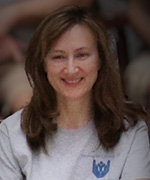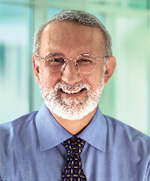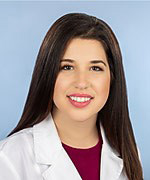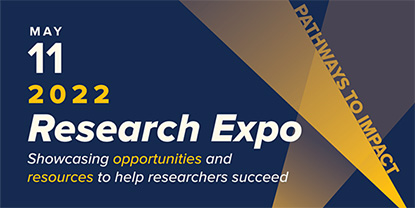School of Medicine Office of Research Newsletter
Volume 1.3 - April 2022

Message from the Associate Dean for Translational Research
“Mental health is not a destination, but a process. It's about how you drive, not where you're going.” (healthyplace.com)
 “Are we all going to get infected by this virus?” This and other questions are on everyone’s mind. As we are on the heels of the largest COVID-19 wave caused by the omicron variant of SARS-CoV-2, news about emerging surges is reaching us from Asia and Europe. .
“Are we all going to get infected by this virus?” This and other questions are on everyone’s mind. As we are on the heels of the largest COVID-19 wave caused by the omicron variant of SARS-CoV-2, news about emerging surges is reaching us from Asia and Europe. .
Aside from this relentless pandemic already in its third year, many of us are highly distressed by the Russian invasion of Ukraine. Watching the news, talking to friends and relatives, or thinking about what will come next evokes immense anxiety. Our focus on mental well-being and its health impact in this issue of the quarterly newsletter from the School of Medicine Office of Research (SOMOR) feels therefore timely.
It is an honor for me to introduce this issue of the SOMOR newsletter. For those who do not know me, I am a pulmonary immunologist, professor of medicine and associate dean for translational research in the school of medicine. Over the past two years, our office worked very hard to guide and facilitate the safe, step-by-step restoration (“ramp-up”) of research activities that came to a screeching halt in March 2020. It is a testament to our UC Davis School of Medicine research community that despite the tremendous setbacks it prevailed and was able to maintain and in fact increase research productivity, especially in COVID-19-related areas. Mental resilience has been and still is a key to succeed in overcoming the effects of stress, hardship and all the unnatural conditions we had to face over the past two years. The longer these conditions persist, the more of us may face burn out.
So, how can we look after our mental wellbeing, avoid burnout, and cope better? Using World Health Organization (WHO), Center for Disease Control (CDC) and other sources, and advice from a psychiatrist colleague, Lally Pia, I compiled a 5-point list with some simple steps that I felt might be helpful for anybody (see sidebar). Please, feel free to reach out to me if you have any research-related questions, issues or ideas you’d like to share. Have a wonderful spring!
Angela Haczku, M.D., Ph.D., Professor of Medicine
Director, UC Davis Lung Center
Associate Dean for Translational Research
School of Medicine, University of California, Davis; haczku@ucdavis.edu
U.S. News and World Report Rankings
The 2023 U.S. News and World Report has ranked the UC Davis School of Medicine as one of the top ranked medical schools in the U.S. The School has maintained its top five ranking in diversity among its students achieving #3 - the highest-ranked medical school on the West Coast. Additionally, it has maintained its top ten rankings in family medicine education (up two spots to #7) and primary care education (#8). It has increased its ranking in public health education to #19. Research remains ranked 51st. Read the UC Davis Health news article.
SciVal, an online program provided by Elsevier, is available to UC Davis faculty and staff. Using Kerberos credentials, faculty and staff have access to the research performance of thousands of institutions and their associated researchers worldwide. SciVal is a powerful benchmarking tool that can assist with developing new research strategies, identifying new and emerging research trends, and creating reports. The School of Medicine Office of Research has utilized SciVal with Scopus ID to create uniquely tailored Publication Metrics Reports that will soon be available to school of medicine departments.
Access SciVal: https://scival.com/home
Recognition
 Congratulations to Sergio Aguilar-Gaxiola, director of the UC Davis Center for Reducing Health Disparities and professor of clinical internal medicine, for winning the 2nd place 2022 AAMC “Innovations that Bolster Community Trust and Engagement” award. Aguilar-Gaxiola received this award in recognition of his great work on the Solano County Interdisciplinary Collaboration and Cultural Transformation Model (ICCTM) Innovation Project. The ICCTM project built community trust among underserved communities in Solano County by implementing Culturally Linguistic and Appropriate Service (CLAS) training to county mental health care workers. Read the UC Davis Health news article to learn more about the ICCTM project.
Congratulations to Sergio Aguilar-Gaxiola, director of the UC Davis Center for Reducing Health Disparities and professor of clinical internal medicine, for winning the 2nd place 2022 AAMC “Innovations that Bolster Community Trust and Engagement” award. Aguilar-Gaxiola received this award in recognition of his great work on the Solano County Interdisciplinary Collaboration and Cultural Transformation Model (ICCTM) Innovation Project. The ICCTM project built community trust among underserved communities in Solano County by implementing Culturally Linguistic and Appropriate Service (CLAS) training to county mental health care workers. Read the UC Davis Health news article to learn more about the ICCTM project.
Impactful Publications
Our faculty publish their findings in "high-impact journals" - those considered to be highly influential in their fields. A journal's impact factor is a measure of the frequency with which an average article in a journal has been cited in a particular year. The impact factor of a journal is an index number calculated by Clarivate and frequently used as a proxy for the importance of the journal in its field.
 Elysia Alvarez, assistant professor in the Department of Pediatrics, Division of Pediatric Hematology/ Oncology, is the first co-author of an article in the January issue of Lancet Oncology. This article is an analysis of the 2019 Global Burden of Diseases, Injuries, and Risk Factors study that addresses the gap in reporting of the global cancer burden in adolescents and young adults (aged 15-19 years), a distinct subgroup with unique epidemiology, clinical care needs and societal impact. The global burden of adolescent and young adult cancer in 2019: a systematic analysis for the Global Burden of Disease Study 2019
Elysia Alvarez, assistant professor in the Department of Pediatrics, Division of Pediatric Hematology/ Oncology, is the first co-author of an article in the January issue of Lancet Oncology. This article is an analysis of the 2019 Global Burden of Diseases, Injuries, and Risk Factors study that addresses the gap in reporting of the global cancer burden in adolescents and young adults (aged 15-19 years), a distinct subgroup with unique epidemiology, clinical care needs and societal impact. The global burden of adolescent and young adult cancer in 2019: a systematic analysis for the Global Burden of Disease Study 2019
 William Murphy, distinguished professor and vice chair of research for the Department of Dermatology, and distinguished professor for the Department of Internal Medicine, Division of Hematology/Oncology, published an article in the January issue of the New England Journal of Medicine. Murphy wrote on the possible role of anti-idiotype antibodies in SARS-CoV-2 infection and vaccination, addressing the diversity in immune responses in people. A Possible Role for Anti-idiotype Antibodies in SARS-CoV-2 Infection and Vaccination
William Murphy, distinguished professor and vice chair of research for the Department of Dermatology, and distinguished professor for the Department of Internal Medicine, Division of Hematology/Oncology, published an article in the January issue of the New England Journal of Medicine. Murphy wrote on the possible role of anti-idiotype antibodies in SARS-CoV-2 infection and vaccination, addressing the diversity in immune responses in people. A Possible Role for Anti-idiotype Antibodies in SARS-CoV-2 Infection and Vaccination
 In the March 12 issue of Lancet, Craig McDonald, chair of the Department of Physical Medicine and Rehabilitation and professor in the Department of Pediatrics, published a study on repeated intravenous cardiosphere-derived cell therapy in late-stage Duchenne muscular dystrophy. The study concluded that this treatment appears to be safe and effective in reducing deterioration of upper limb function in patients with this condition, with further studies needed to confirm longer-term benefits. For more on this study, see also this story from UC Davis Health News. Repeated intravenous cardiosphere-derived cell therapy in late-stage Duchenne muscular dystrophy (HOPE-2): A multicentre, randomised, double-blind, placebo-controlled, phase 2 trial
In the March 12 issue of Lancet, Craig McDonald, chair of the Department of Physical Medicine and Rehabilitation and professor in the Department of Pediatrics, published a study on repeated intravenous cardiosphere-derived cell therapy in late-stage Duchenne muscular dystrophy. The study concluded that this treatment appears to be safe and effective in reducing deterioration of upper limb function in patients with this condition, with further studies needed to confirm longer-term benefits. For more on this study, see also this story from UC Davis Health News. Repeated intravenous cardiosphere-derived cell therapy in late-stage Duchenne muscular dystrophy (HOPE-2): A multicentre, randomised, double-blind, placebo-controlled, phase 2 trial
Get to Know SOMOR
The Safety Management program at UC Davis School of Medicine is responsible for providing a safe workplace by minimizing the potential hazards to faculty, staff, students and visitors. It sets the standards for safety management and complements individual laboratory safety programs and activities.
As safety officers, Brett Smith and Steve Libertini’s main role is to develop, implement and maintain the school of medicine’s safety programs. They collaborate with faculty, staff and students to improve the safety culture and regulatory compliance. They serve as a liaison between researchers, campus Environmental Health & Safety (EH&S) and outside regulatory agencies. Agencies such as California Department of Public Health (CDPH), Certified Unified Program Agency (CUPA) and the Fire Marshal, have routine inspections of school of medicine lab spaces.
The safety team oversee many of the campus' biohazard waste and chemical waste accumulation sites and helps to ensure the campus does not have any disruptions with waste removal. They are always eager to provide technical expertise and assist labs in identifying ways to mitigate hazards.
The safety officers update and maintain the SOMOR safety documentation and resources, including the Injury & Illness Prevention Program (IIPP) and the Emergency Action Plan (EAP). They work with campus Building Maintenance Services to coordinate building wide utility (HVAC, water and electricity) shutdown to help ensure safe operations in our labs.
The pandemic created new safety issues, which the team worked nimbly to resolve. During this time, they oversaw the setup and management of a Vaporized Hydrogen Peroxide (VHP) decontamination facility for the reprocessing of essential PPE and the sterilization of in-house 3D-printed nasopharyngeal COVID testing swabs. The VHP decontamination process required coordination with multiple campus units to develop stringent safety protocols and procedures for work with VHP, including modifications to the building HVAC system, sealing of windows and doors and installation of "lock out tag out" systems. This endeavor resulted in the successful decontamination of over 850 N95 masks collected from the UC Davis Medical Center and, at peak production, sterilization and packaging of ~ 1200 COVID testing swabs per day.
SOMOR Safety Management Unit
Brett Smith
Safety Officer
School of Medicine, Genome Center, Biomedical Engineering, Davis Campus
Steve Libertini
Safety Officer
School of Medicine, Sacramento Campus
Feature
Resilient Spaces: UC Davis SOM research and initiatives on well-being
 Hendry Ton, left, with Darrell Desmond and Calene Roseman
Hendry Ton, left, with Darrell Desmond and Calene Roseman
During the COVID pandemic, a sense of isolation grew around the world as people retreated into their homes. While our social media communities exploded, our in-person lives shrank into bubbles and behind shields and masks. We sent our digital avatars to offices and classrooms and stopped going out into the world for food and recreation.
In the face of this collective isolation, resilience became a valuable trait. Pandemic-era initiatives to help support both safety and resilience, from remote work and school to vaccination pushes, became large-scale matters. UC Davis has kept pace throughout, and both research and initiatives on wellness are ongoing – and evolving.
Hendry Ton took on his permanent role of associate vice chancellor for health equity, diversity and inclusion in 2019, just before the pandemic started. One of his goals was to incorporate wellness, healing and restorative practices into Diversity, Equity and Inclusion (DEI) spaces at UC Davis Health. Once the pandemic began, his focus shifted to addressing it utilizing these same practices. Yvonne Calderon, the chair of the Latinx Staff and Faculty Association (LSFA), one of the Employee Resource Groups (ERGs) housed in the Office for Health Equity, Diversity and Inclusion (OHEDI), recalls, “I was feeling myself overwhelmed and stressed. I had never experienced such a pandemic as this one with COVID-19 in my lifetime. ... I knew the level of stress had to be high for others too.” She reported that stress was building among LSFA and across the ERG constituency. In collaboration with the LSFA, OHEDI developed a webinar series to help cope with the stress of the pandemic, honoring inclusive, community-centric practices not commonly found in academic health spaces. These included cultural practices such as meditation from Eastern traditions and racial healing techniques with roots in Black, Brown and Indigenous communities.
Coping as a Community helped participants address the stressors of the pandemic with tools built on self-reflection, listening and compassion. However, when the reality that the pandemic was going to be with us for a while became apparent, the series pivoted from coping, which connotes a battle against stress and trying to maintain a level of resilience, to growing, which indicates a push to thrive and even improve under these conditions. As the webinar series evolved to Growing as a Community, it focused on proactive techniques such as community building and relationship development, both personal/familial and in allyship.
The next phase in the development of this uplift of DEI space is an exciting one. In December 2021, UC Davis Health was designated a Truth and Racial Healing and Transformation (TRHT) Campus Center, the first academic health system to be so named. Under the leadership of OHEDI Director Mercedes Piedra, the center will develop various models for how to integrate restorative and healing practices within our community. “One of the founding principles is that of a ‘Beloved Community,’” Ton explains. “This is something that Dr. Martin Luther King talked about, which is community that is very inclusive – so we will strive to be a very inclusive academic community that also looks at the social determinants of health, like poverty and racism, and to try to address that through the process of healing and community building.”
As a result of our remote experiences, we collectively have more understanding about the impact of social isolation and an appreciation for the possibilities of technology to alleviate them. NeuroTeens is an example of these emerging possibilities. A virtual support group launched in summer 2021 by faculty and staff from the UC Davis MIND Institute, NeuroTeens is a safe space for neurodivergent girls and nonbinary persons ages 12-18 to socialize and make connections. “This is a space for them to feel comfortable and for them to be who they are,” Axie Acosta, an assistant clinical research coordinator at the MIND Institute and the NeuroTeens organizer, said in this October 2021 interview with UC Davis Health News.
Autism tends to be understudied in female populations. Autistic girls may use different coping strategies from their male counterparts, such as camouflaging or masking their autistic characteristics. These methods can lead to missed diagnoses, according to Christine Wu Nordahl, who leads the Girls with Autism Imaging of Neurodevelopment (GAIN) study. Social groups for children with autism tend to be dominated by male participants, making NeuroTeens a unique and important virtual space for female and nonbinary participants to meet, introduce themselves, and share their interests. The NeuroTeens team invites you to sign up if you are interested in NeuroTeens updates, including upcoming information sessions.
 Veronica Ahumda
Veronica Ahumda
As children returned to their classrooms over the past year, they left behind some of their peers, who have been doing remote learning since well before the pandemic began. By Veronica Ahumada’s count, about 2.5 million U.S. children have serious medical issues that keep them from attending in-person school on a regular basis. Ahumada, director of the Technology and Social Connectedness lab at UC Davis and assistant professor in the Department of Pediatrics, was herself one of those children. A mysterious illness, only diagnosed later in her life as congenital heart defects, kept her out of school for long stretches of time through middle school. She is now studying ways in which the disruption to learning experiences and the social isolation to which these children are vulnerable can be mitigated by the use of robots.
Ahumada’s study on personalizing remote learning through the use of robotic innovations has been highlighted in the February 11, 2022, issue of Science by writer Alla Katsnelson. The robots that Dr. Ahumada and colleagues are designing, co-creating, and studying allow at-home children to have a physical presence in their classroom via a robot avatar. The study is looking at their effectiveness in helping children feel as fully engaged and socially connected in the classroom as possible while also researching ways of improving on the design. Ideally, robot avatars would move amongst their peers, raise their “hands,” point and interact directly with their class and teacher. This relies on developing a robot that integrates well into the classroom, interacts naturally with peers and has appropriate supportive technologies for operating the robot.
“When [Ahumada] visits classrooms with a robot in play,” Katsnelson writes, “she sees sick children mentioning their nausea or showing classmates a port for delivering medicine or a scar from a recent surgery. Classmates breezily ask their robot-embodied friends how they are doing. Healthy and sick children form a single community.”

